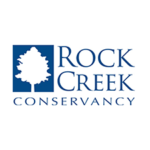Planned giving (PG) can be one of the most intimidating areas of fundraising for independent schools that lack the resources to hire a dedicated PG team member – and most do! For chief development/advancement officers, it can feel like there is no time to add PG activities to an already-full plate, not to mention a great deal of trepidation around the various PG vehicles. It’s often viewed as an “all or nothing” proposition; if you don’t have a good understanding of all PG vehicles, it may seem like there’s no point to – or comfort in – investing in PG at all.
However, there is so much you can do, even without dedicated PG resources. Here, we take you through a simple process to scale up your PG program in an affordable and stress-free way.
Begin with Stewardship & Recognition
We start with stewardship for 3 reasons:
- You likely have living donors who have named your school in their estate plans. Without proper stewardship, philanthropic priorities and estate plans can change.
- Stewardship and recognition of existing PG donors, living or deceased, builds awareness of your school as a philanthropic choice for legacy giving.
- Recognition of current PG donors may spark other PG donors you were unaware of to come forward and share plans with you. This will enable you to capture new information about – and enhance your relationship with – that donor.
Here are a few ways in which you can steward and recognize PG donors:
- Establish a legacy giving society: promote the society in annual reports, newsletters, on your website, etc.; list society members; share stories about society members.
- Create a donor wall for your legacy giving society and place it in a prominent location where you can highlight it on tours and during on-site events.
- Host dinners/receptions for legacy donors on a regular basis.
- Include legacy giving society member profiles and stories in publications and communications.
Before you begin, it’s a good idea to ensure you know who your current PG donors are and ensure this is captured in your database. Are planned giving donors (living and deceased) coded in your database – preferably as members of your legacy giving society? Have you captured their preferred recognition name? If you’re not certain you’ve identified them all, work with your accounting/finance department and within any paper files to locate gifts made via bequest and other PG vehicles. We also recommend saving copies of all paperwork for each PG gift in PDF format for your electronic PG file. This file and your database should mirror one another.
Determine Gifts to Accept
How often do you refer to your gift acceptance policy? How often do you update it? It’s time to determine what types of gifts you’re comfortable accepting now. View your policy as a living, breathing document – something readily shared with school leadership, donors, and prospects, and readily updated as your ability to handle certain giving vehicles evolves.
Break out your existing policy (or begin from scratch), and make sure it reflects everything you will readily accept. Consider adding a few additional, manageable vehicles to the mix, such as:
Bequests
Bequests are by far the most popular and easiest PG vehicle, and they’ve been on the rise since 1980 and this trajectory will continue. The donor simply includes your school in their estate plans, and when they pass away, you receive the gift. Over 90% of all PG gifts are bequests, which is why it’s so important to steward bequest donors and to promote bequests as a great way to leave a legacy to your school. Key questions to ask your donors include:
- Would you like to continue to support X School after your death?
- Have you mentioned X School in your will?
- Would you consider making a planned gift, such as a bequest, in the future?
Retirement Plans & Life Insurance
Retirement plans and life insurance can be just as easy to accept as bequests. Instead of the donor naming your school in their will, they can make your school a beneficiary of a retirement plan or life insurance policy. The IRA, for instance, requires the owner to take a minimum qualified distribution each year once they turn 70½. They can gift that distribution to your school tax free, up to $100,000/year. Due to estate tax implications, retirement plans and life insurance policies are terrible for estate planning but great for charitable giving.
Appreciated Securities & Donor Advised Funds
Without a doubt, you’re already accepting gifts of securities and those via DAFs, both very common ways in which donors make annual and legacy gifts. You should ensure your website contains simple instructions for these gifts and includes a link to DAF Direct – a great new widget to promote giving.
Finally, don’t let your gift acceptance policy prevent you from exploring more complex PG vehicles if a donor presents the opportunity for consideration. Loop in school leaders and anyone on your board who may have legal and financial expertise. With the right partners, expertise, and support, you may be able to capitalize on new opportunities that, on the surface, appear too complex.
Grow Your Program
Identifying your best PG prospects is a big step in growing your program. For this, we recommend conducting prospect identification modeling with a firm like S&W or a tool like DonorTrends. Modeling looks at your current donors and their behaviors and provides you with a manageable list of top PG prospects. We like to overlay these results with a philanthropic capacity screening (aka wealth screening) using a tool like DonorSearch or iWave to further qualify them based on wealth and philanthropic capacities.
To build greater awareness of your PG opportunities, try the following:
- Add a hyperlink to the planned giving section of your website on your email signature, such as: “Make a gift that costs nothing during your lifetime. Here’s how.”
- Update your website to include planned giving options, giving society info, etc., and make it easy to find.
- Establish a main point of contact for PG inquiries (typically the CDO); provide clear contact info.
- Include PG language on publications, appeals, etc.: “Have you included X School in your estate plans? We’d love to know!”
And of course, what about those complex PG vehicles we’ve heard of but haven’t tackled – CGAs, CLTs, CRATs, CRUTs, and all those other acronyms? It’s no surprise that these tools are difficult to understand and articulate to prospects, not to mention the risk that comes with any income-generating vehicle. While larger organizations, such as universities and hospitals, can manage them, it’s not common in the independent school sector. But, through strategic partnerships, you can expand opportunities for your donors!
If you have an endowment or other investments, begin by reaching out to the financial institution managing them. It’s likely they offer a myriad of planned giving services for their clients. You could also check with your school’s bank. If none of your school’s current financial institutions offer planned giving services, here are two suggestions:
- Fulton Bank (Peter Reitmeyer, preitmeyer@fultonbank.com)
- Glenmede (Rosemary DiRita, dirita@glenmede.com)
Check with your local community foundation. For instance, both The Foundation for Delaware County and the Chester County Community Foundation offer planned giving services.
Finding the right partner to administer your PG program – one you can call upon as you have questions, when donors ask to learn more, or even when you want to host educational receptions for your PG prospects – can make all the difference.
Build Your Toolbox & Your Confidence
It may or may not be surprising that many, if not the majority, of schools that offer an array of planned giving options do not have a PG expert on staff. Instead, PG inquiries go through the CDO or, in some cases, an MGO. Building your competencies and, most importantly, your confidence in PG will happen the more you do it. Immerse yourself in PG. “Do well while doing no harm” – learn enough about PG to grow your program by recognizing what you don’t know. Strive to be a “synthesizing generalist” – tap your trusted partners and defer to the donor’s trusted partners for final decisions.
And finally, having a full toolbox at your disposal will make it that much easier to say “yes” to new options and opportunities. Here are a few of our favorites:
- Guidelines for Reporting and Counting Charitable Gifts – Revised and Updated for 2021
- Planned Giving Pocket Guides
- Visual Guide to Planned Giving by Russel James, JD, PhD
- GiftPlanning.org and PlannedGiving.com
- Planned Giving Council of Greater Philadelphia (PGCGP) (or your local planned giving council)
If you have any questions about planned giving or would like to learn more about how S&W can partner with you to build a robust planned giving program, please contact Kelly Grattan at kgrattan@schultzwillstg.wpengine.com or 570.847.6041.




